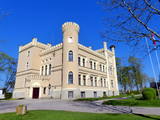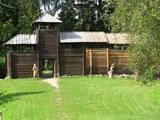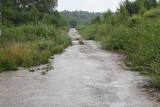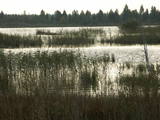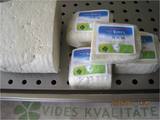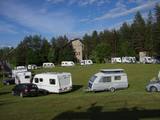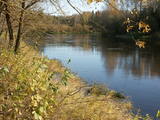| Nr | Name | Beschreibung |
|---|---|---|
|
Liellopu izsoļu nams ir vienīgais liellopu izsoļu nams Baltijā. Izsoles tiek rīkotas gaļas šķirņu jaunlopiem - buļļiem un telēm vecumā līdz 12 mēnešiem, regulāri - divas reizes mēnesī. Katru mēnesi izsolēs piedalās vairāk kā 2000 Latvijā audzēti jaunlopi. |
||
|
Das Bistro befindet sich 130 m von der Kreuzung von Berzkrogs (gegenüber der Tankstelle Statoil). Es unterstützt lokale Produzenten, deren hergestellten Produkte (auch Souvenirs) man hier genießen oder kaufen kann. Lettische Küche: Graue Erbsen mit Speck, Gerstengrütze. |
||
|
Das (neogotische) Schloss des Landgutes von Gārsene wurde von 1856 bis 1860 nach dem Vorbild einer Villa in Deutschland gebaut. Von 1860 bis 1920 befand sich das Landgut im Besitz der Baron-Familie Budberg-Beninghausen Im Jahr 1885 wurde das Schloss erweitert, in dem ein Flügel angebaut wurde. Von 1939 bis 1940 wurde das Gebäude zu einer Schule umgebaut, und am 2. Juni 1940 beteiligte sich bei der feierlichen Eröffnung auch der erste Präsident Lettlands Kārlis Ulmanis, für den dieser Besuch seine letzte offizielle Dienstreise in Lettland war. Zu dem Landgutkomplex gehören auch andere Wirtschaftsgebäude und ein Park. Heute haust in dem Schloss die Schule von Gārsene. In der Schule ist eine Ausstellung eingerichtet worden, die der Baron-Familie, der Geschichte der Schule und dem Ort Gārsene gewidmet ist. Besonders interessant ist der Kachelofen! An dem Schloss beginnen die Naturpfade vonGārsene: der kulturgeschichtliche Pfad, der Spazierpfad der Barone u.a. Vor dem Besuch der Pfade muss man ein Ticket im Schloss von Gārsene erwerben. An der Vorderseite des Schlosses befindet sich ein Gedenkstein, der dem Agrikulturchemiker und Professoren Pēteris Kulitāns (1878 – 1951) gewidmet ist. |
||
|
Die Landschaft von Kassinurme wurde von der letzten Eiszeit geformt und zählt zu den Perlen von Vooremaa. Hier befinden sich nebenan zueinander vorzeitliche Burg der Esten und der heilige Eichenwald. Hier sind Bühne, Schaukel, Tipis, Feuerstelle und ein Modell der Burg. In Kassinurme gibt es einen Naturlehrpfad, Gesundheitspfad und historischer Pfad. |
||
|
Das Wirtshaus befindet sich am Rande der Straße Cesis – Valmiera. Es ist ein Blockhaus im lettischen Stil. Gemüse und Früchte werden von den lokalen Bauern gekauft. Lettische Küche: Dünne Pfannkuchen, Kartoffelpfannkuchen, kalte Suppe, Waldpilzsuppe, Ampfersuppe nach dem Geschmack der Großmutter, Graupengrütze, graue Erbsen, gebratene Strömlinge, Kabeljaufilet, im Bier von Brenguļi geschmortes Rindfleisch, geschmortes Kaninchen, geschichtetes Roggenbrot-Dessert. Das besondere Gericht: "Glendeloka". |
||
|
Südlich von Gardene war in der Zeit der Sowjetunion einer von der größten Militärversuchsfelder der Panzer in baltischen Kriegsgebiet. Heutzutage wird der größte Teil des Militärversuchsfeldes nicht bewirtschaftet und das Territorium bewächst langsam. Im Territorium sind einzelne Gebäudefragmente oder Ruinen u.a. für die Militärversuchsfelder charakteristischen Elemente erhalten geblieben. Von dem Weg Dobele – Annenieki, der nach Militärversuchsfeld führt, zweigt sich ein betonierter Armeeweg ab, der auch heute benutzt werden kann. Die Bebauung von Gardenes ist auch sehr interessant – die Gebäude und die Planung der Gebäude. In dieser Zeit wohnten in Gardene die Soldaten der sowjetischen Armee und ihre Familien.
|
||
|
Seit der Mitte des vorigen Jahrhunderts wurde in der Seda – Heide Torf abgebaut, trotzdem bleibt es eins der wichtigsten NATURA 2000 Territorien in Lettland mit einer grossen Vielfalt an Landschaften, Biotopen und Biologie – insbesondere Vögel. Dies ist ein guter Ort zur Vogelbeobachtung während der Vogelzugsaison, ein Beobachtungsturm wurde zu diesem Zweck am Sumpf errichtet.
|
||
|
Die Schule von Ķemeri wurde 1934 von Architekt
K. Cināts gebaut. Es ist eins von den wenigen
Schulgebäuden in Lettland, wo eine historisch wertvolle
Innenausstattung und Exterieur – unterdessen
allegorische Figuren auf der Fassade erhalten geblieben
sind.
|
||
|
Diese Tour gibt Ihnen einen Eindruck vom östlichen Teil Lettlands, der weniger bevölkert und auch bei Touristen weniger beliebt ist. Sie werden zuerst in Aluksne ankommen und die Stadt erkunden, die sich im Hochland von Alūksne am Ufer des Alūksne-Sees befindet. Es lohnt sich, Temple Hill zu besuchen - einen alten lettischen Burghügel und den Ort der Altstadt, der Sonnenbrücke, des Schloss-Herrenhausparks, der Alūksne Lutheran Church und des Bibelmuseums. Nachdem Sie dort übernachtet haben, fahren Sie mit dem Bus zum Startpunkt der Wanderung in Ape. Dieser Waldwegabschnitt schlängelt sich durch eine hügelige Ackerlandschaft und mündet dann in einen großen dunklen Wald, der gelegentlich von den blauen Oberflächen der Seen unterbrochen wird. Nach Peļļi überquert es die lettisch-estnische Grenze und windet sich 2 km lang an den Ufern der Seen Smilšājs, Sūneklis und Ilgājs auf der estnischen Seite, bekannt als Paganamaa (Übersetzung: Teufelsland). Dort steigt es ab und tritt in die subglaziale Depression Korneti-Peļļi ein, eine der beeindruckendsten Schluchten Lettlands. Der Waldweg kehrt am Ilgājs-See nach Lettland zurück und führt Sie nach einem steilen Aufstieg durch ein hügeliges Gebiet zum Burghügel von Drusku. Hier können Sie eine schöne Aussicht genießen. Am Ende dieser Tour erreichen Sie Korneti. Der Abschnitt befindet sich im geschützten Landschaftsgebiet „Veclaicene“. |
||
|
Das Café befindet sich im Zentrum des Dorfes, am Geschäft Top. Lettische Küche: Kartoffelpfannkuchen mit Schinken, graue Erbsen mit Speck, traditionelles Gericht Sklandrausis. Das besondere Gericht: Topf Apsīte. |
||
|
Exkursionen zum Hof. Man kann Ziegen, Pferde, Kaninchen, Hausgeflügel und Haustiere anschauen. Die Besucher können sich auch fürs therapeutische Reiten anmelden, Pferd reiten, Ponyreiten oder mit einer Pferdekutsche fahren. Erwerb von Ziegenmilchprodukten: Milch, Käse, Quark, Kefir und Joghurt. |
||
|
Karulas nacionālā parka lielākais ezers - 2,8 km garš, līdz 1 km plats. Ezera ziemeļaustrumu krastā atrodas parka apmeklētāju centrs. 5,5 m dziļais ezers ir gan zivīm, gan nostāstiem bagāta vieta. Ezera un tuvākās apkārtnes iepazīšanas nolūkā ir izveidota 3,5 km garā Ehijerva taka (Ähijärve teerada). Tās sākums atrodas pie iepriekš minētā apmeklētāju centra, kur izveidota atpūtas vieta un atraktīvs bērnu spēļu laukums. Taka sākumā ved gar ezera krastu, nelieliem mitrājiem un meža ceļiem, kas izmantoti iepriekšējos gadsimtos. |
||
|
Die Landwirtin baut verschiedenes Gemüse im ökologischen Anbau an. Zudem gibt es Obstbäume und Beerensträucher. Es gibt zwei Kühe alter und daher geschützter Haustierrassen und Pferde der Rasse Stämmige Zemaitukai. Sie ist Vorsitzende des Klubs für Arbeitspferde. Auf dem Hof werden auch verschiedene Feste veranstaltet, wie das Kräuterfest (Mariae Himmelfahrt), Herdenaustrieb. |
||
|
A comparatively large swamp to the North of the Zaļā dune, this is an important place for sulphurous waters, just as is the case with Zaļais swamp. The swamp is cut in two by the 3.5 km Ķemeri-Antiņciems road, from which interesting landscapes can be seen. The road is not appropriate for cars, however. To the East of Raganu swamp is Lake Putnezers, which is difficult to access. There is a small car park with an information stand on the shore of Lake Melnezers alongside the Ķemeri-Jaunķemeri road. The historical and overgrown Old Ķemeri road can be used to get to the seashore from this location. |
||
|
На маршруте сможете узнать особую культурную среду Латгалии, людей, которые ее создают, порадоваться красивым ландшафтам, пройтись по природным тропам и искупаться в каком-нибудь из прославленнных озер Латгалии. В Ливаны узнаете о работе стеклодува, в Даугавпилсе побываете в крепосте 19-го века, где теперь расположен центр всемирно известного художника Марка Ротко. Дорога будет виться по живописным излучинам Даугавы. Информация о маршруте от Latvijas Lauku forums |
||
|
Die Hauptstadt von Estland. Die Altstadt (auf der UNESCO-Liste des Weltkulturerbes) ist ein hervorragendes mittelalterliches Baudenkmal (14. – 15. Jh). Die ehemalige Hansestadt. |
||
|
In the summer season we offer trips by raft and boats, camps for children, an area for organizing events, camping for the night. In the winter season "Baili" has a ski center - downhill ski tracks, ski and snowboard equipment rental, instructor services. Catering offer in a cafe. |
||
|
Teritorija, kas aptuveni 20 km garumā „piekļāvusies” abiem Aiviekstes upes krastiem. Dabas parka galvenā vērtība ir palieņu pļavas (un citi pļavu biotopi), kas ir ļoti nozīmīga daudzu augu un dzīvnieku (īpaši – putnu) sugu dzīves vieta. Ūdenstūristiem, kas laivo pa Aivieksti, nakšņošana ir jāplāno tikai šim mērķim paredzētās vietās!
|
||
|
Meklējams pie Gulbjiem – Dvietes senlejas informācijas centra. No torņa labi pārskatāma ūdeņiem bagātos pavasaros pārplūstošā Dvietes paliene, dzīvei savvaļā pielāgoto mājlopu aploki un izlīkumotā Dvietes upīte. |
||
|
Agrotūrisma saimniecība aicina cilvēkus pavadīt brīvo laiku dabā. Kopš 2004. gada 45 ha lielajā bioloģiskajā saimniecībā tiek audzēta labība un aitas. Saimniecība pielāgota atpūtai un svinību rīkošanai. Visapkārt paveras plaša ainava ar rudzu laukiem, aitu ganībām, zirgu stalli, kas ļauj izzināt jāšanas pasauli un bioloģiskās saimniekošanas principus. 2 svinību zāles un 13 guļamistabas 40 viesu izguldināšanai klasicisma stila ēkā. Plaša apsargātā teritorijā, asfaltēts ceļš ērtai piekļuvei, bērnu rotaļu un volejbola laukumi, smilšu pludmale, klusa atpūta bibliotēka, makšķerēšana, putnu vērošana un dažāda garuma pastaigas un izjādes maršruti mežā. Pieredzējuši treneri mācīs iesācējiem jāt, un profesionāliem jātniekiem iespēja uzlabot savas prasmes. Iegādei laukos audzēti ekoloģiski tīri dārzeņi, augļi, un ne tikai.
|
||



